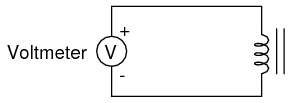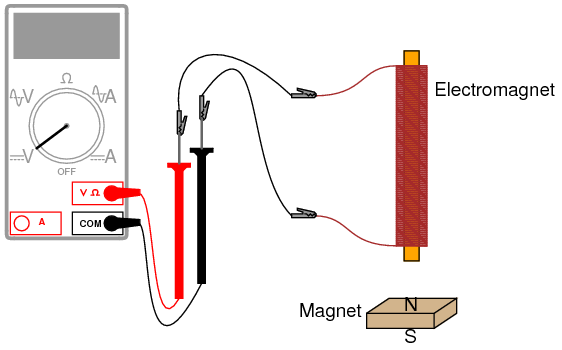2.10: Electromagnetic Induction Experiment
- Page ID
- 2131
PARTS AND MATERIALS
- Electromagnet from previous experiment
- Permanent magnet
See previous experiment for instructions on electromagnet construction.
CROSS-REFERENCES
Lessons In Electric Circuits, Volume 1, chapter 14: “Magnetism and Electromagnetism”
LEARNING OBJECTIVES
- Relationship between magnetic field strength and induced voltage
SCHEMATIC DIAGRAM

ILLUSTRATION

INSTRUCTIONS
Electromagnetic induction is the complementary phenomenon to electromagnetism. Instead of producing a magnetic field from electricity, we produce electricity from a magnetic field. There is one important difference, though: whereas electromagnetism produces a steady magnetic field from a steady electric current, electromagnetic induction requires motion between the magnet and the coil to produce a voltage.
Connect the multimeter to the coil, and set it to the most sensitive DC voltage range available. Move the magnet slowly to and from one end of the electromagnet, noting the polarity and magnitude of the induced voltage. Experiment with moving the magnet, and discover for yourself what factor(s) determine the amount of voltage induced. Try the other end of the coil and compare results. Try the other end of the permanent magnet and compare.
If using an analog multimeter, be sure to use long jumper wires and locate the meter far away from the coil, as the magnetic field from the permanent magnet may affect the meter’s operation and produce false readings. Digital meters are unaffected by magnetic fields.


